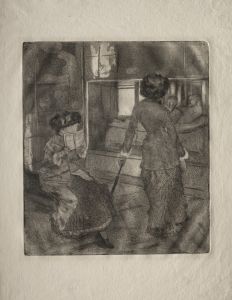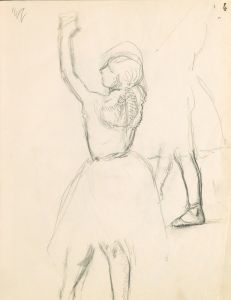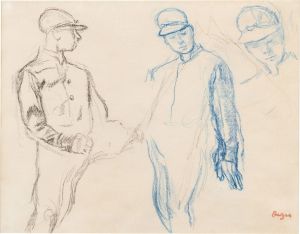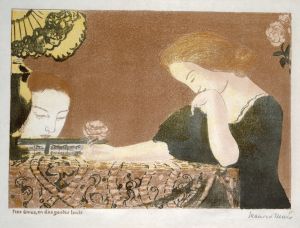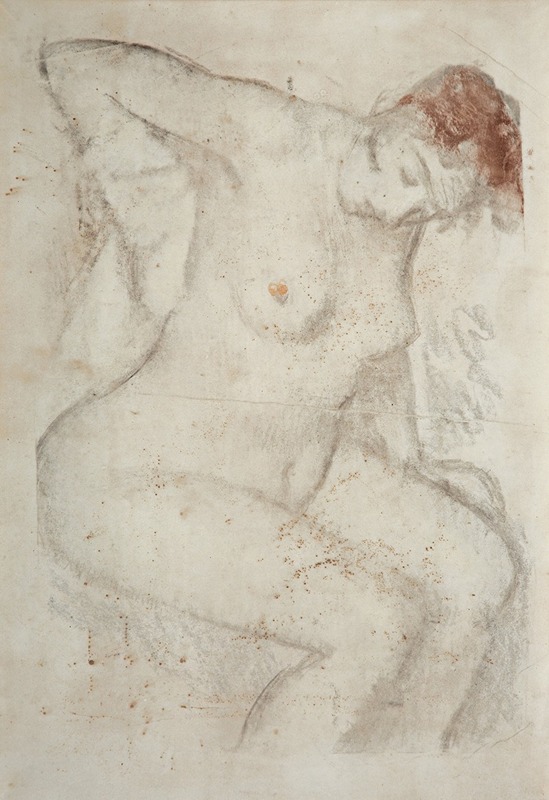
Femme s’essuyant
A hand-painted replica of Edgar Degas’s masterpiece Femme s’essuyant, meticulously crafted by professional artists to capture the true essence of the original. Each piece is created with museum-quality canvas and rare mineral pigments, carefully painted by experienced artists with delicate brushstrokes and rich, layered colors to perfectly recreate the texture of the original artwork. Unlike machine-printed reproductions, this hand-painted version brings the painting to life, infused with the artist’s emotions and skill in every stroke. Whether for personal collection or home decoration, it instantly elevates the artistic atmosphere of any space.
"Femme s’essuyant" (translated as "Woman Drying Herself") is a pastel drawing by the renowned French artist Edgar Degas. Created around 1884-1886, this artwork is part of a series of works by Degas that depict women in various stages of bathing and personal grooming. Degas is well-known for his fascination with the human form and his ability to capture intimate, everyday moments with a sense of realism and immediacy.
The pastel drawing shows a woman in a private moment, drying herself after a bath. The composition is characterized by its dynamic use of lines and the soft, yet vibrant, application of pastel colors. Degas's technique in this piece demonstrates his mastery of the pastel medium, which he used to create a sense of texture and depth. The woman's pose is natural and unposed, reflecting Degas's interest in capturing candid moments rather than idealized forms.
Degas often explored themes of femininity and the private lives of women, and "Femme s’essuyant" is a quintessential example of this focus. His approach to these subjects was both intimate and detached, offering a glimpse into the private world of his subjects while maintaining a respectful distance. This particular work is notable for its attention to detail and the subtle interplay of light and shadow, which adds to the overall sense of realism.
The setting of the drawing is simple, with minimal background details, allowing the viewer to focus entirely on the figure of the woman. This simplicity is a hallmark of Degas's later works, where he often stripped away extraneous details to concentrate on the essence of the scene. The use of pastel also allowed Degas to experiment with color and texture in ways that were not possible with oil paint, giving his works a unique vibrancy and immediacy.
"Femme s’essuyant" is part of the collection at the Musée d'Orsay in Paris, which houses many of Degas's works. The museum is known for its extensive collection of Impressionist and Post-Impressionist masterpieces, and Degas's works are among the highlights. This particular piece is a testament to Degas's skill as an artist and his ability to capture the beauty and complexity of everyday life.
Throughout his career, Degas was associated with the Impressionist movement, although he preferred to be called a Realist. His works often focused on scenes of modern life, including ballet dancers, laundresses, and women at their toilette. "Femme s’essuyant" fits within this broader context of Degas's oeuvre, showcasing his interest in the human form and his ability to depict it with both sensitivity and precision.
In summary, "Femme s’essuyant" by Edgar Degas is a masterful pastel drawing that captures a private, intimate moment with remarkable realism and attention to detail. It reflects Degas's ongoing fascination with the human form and his skillful use of the pastel medium to create texture, depth, and vibrancy. This work remains an important part of Degas's legacy and continues to be admired for its artistic excellence.









